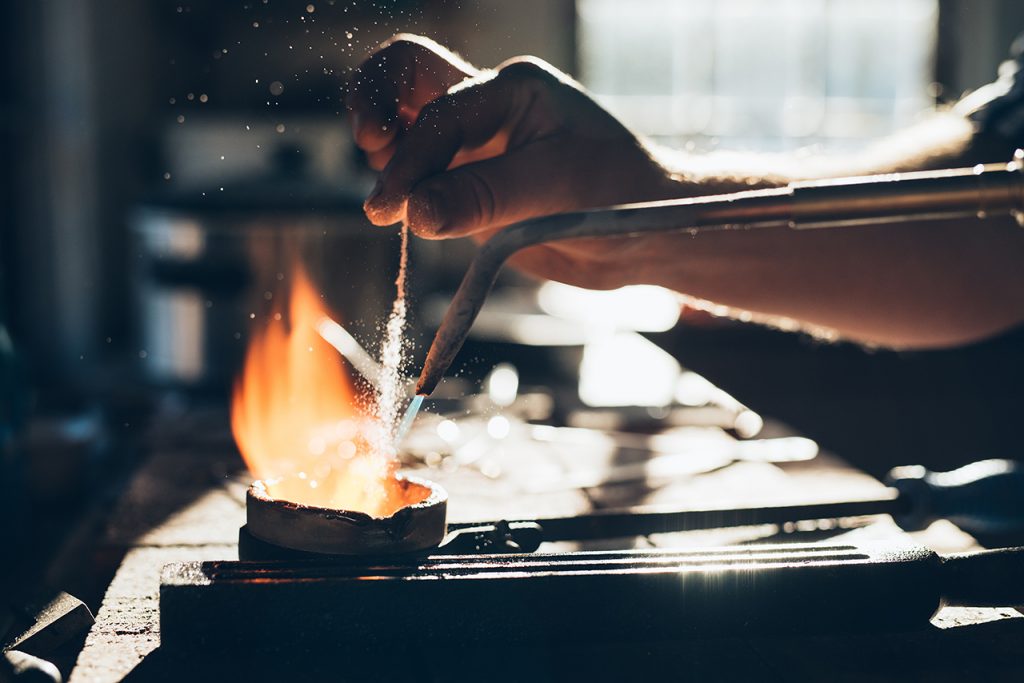Jewellery
The profession of a jeweller is a meticulous work consisting in transforming an idea, a design or a concept into a genuine piece of jewellery!
Artisan jewellers mainly make settings for stones. He can carry out the rest of the manufacturing himself, or he can send it to other professionals such as the setter or the polisher for a unique and flawless result. Once the piece has been melted, set and crimped, the polisher removes all visible traces and gives the jewel its brilliance.
The job of a jeweller requires a certain love of the arts, flawless precision and a vivid imagination.

The creation of jewellery pieces involves many stages, from CAD to polishing, including the selection of stones and setting.
Together with the customer, the artisan jeweller determines the various aspects required to make the piece of jewellery. Style, shape, budget and components are the key elements that define the rest of the project and the process to be put in place. Starting from a sketch or wax model, the artisan jeweller proceeds to casting. This stage consists of pouring the pre-defined metal into a mould, then adjusting the piece and fitting the chosen stones.
Focus : High Jewellery

High jewellery, before being a profession, is an art of excellence and refinement that is practised every day in the heart of the greatest workshops such as those on Place Vendôme : a universal symbol of luxury.
A high jewellery workshop is a place where prestigious creations worthy of the greatest fashion shows are born. Passion, creative drive, innovation, ingenuity, mastery of skills and the quest for excellence are all elements that characterise this beautiful profession.
These unique pieces are handmade with the greatest respect for the aesthetic codes of each era and French traditions. By blending traditional skills with the mastery of innovative techniques, the master jeweller brings to life real jewels that stand the test of time.
A master jeweller designs jewellery pieces for major luxury brands. They create jewellery to the highest standards. He is often in search of the best tools, precision and prowess to achieve exceptional results.
Precious stones are the main components of a high jewellery creation. They are carefully selected and meticulously checked to ensure the quality of each stone.
The use of high-value metals and stones is therefore unquestionable, which is why the jewellery created is generally worn only once and accompanies red carpets or special occasions. They are not designed for purchase, but rather for loan by prestigious brands and celebrities.
Jewellery : what stages of production ?
CAD
The jewellery CAD work is one of the first stages in the jewellery production chain. It involves designing and producing the visual aids and technical data sheets that are essential for producing jewellery models.
A 3D designer first analyses the client’s request and interprets it using the documents available. This may be based on specifications, rough drawings, photos or even sketches that bring out the essential features of the project.
The first challenge is to translate this creative intention into an initial digital design that respects all the elements required to manufacture the part in question.
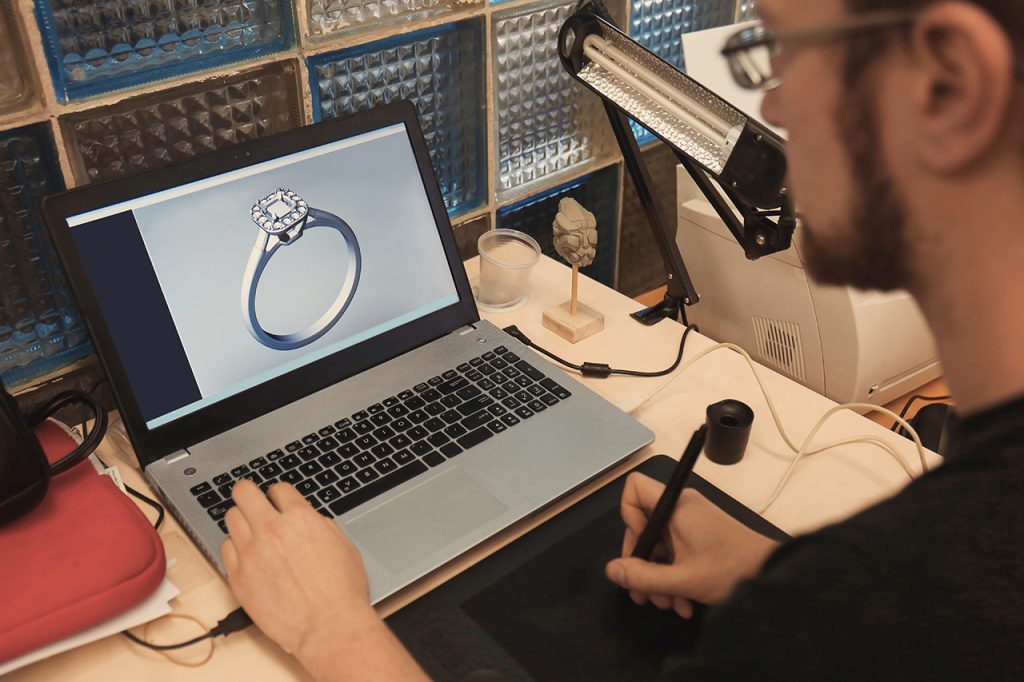
Crimping
The art of setting is a fine bridge between the jeweller’s and the polisher’s works.
This stage is an essential link in the jewellery production chain. From analysing the gems to inlaying the precious stones, the artisan gem-setter methodically chooses the type of setting and checks the conformity of the stones by applying all the appropriate procedures.
With delicacy and scrupulousness, the jeweller sets the jewel in a handle that has been protected beforehand with a malleable wax. He then determines the setting and the tools to be used. He chooses the right type of setting (claw set, seed set, closed set, baguette set, etc.) and finally puts his talent to work on the stone and the setting.
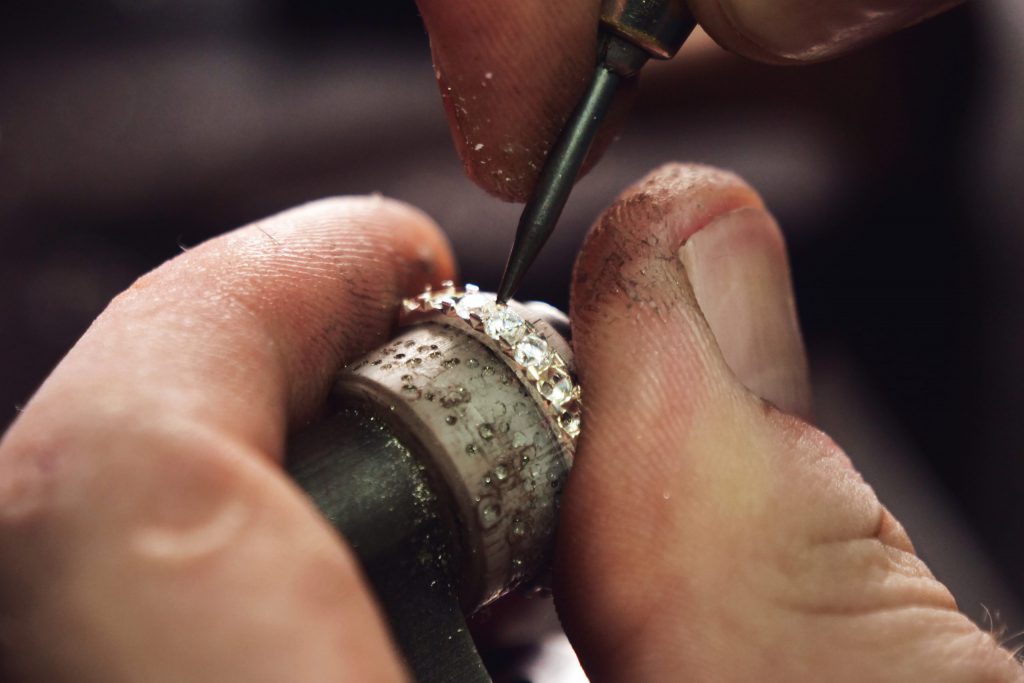
Polishing
Polishing is a series of extremely precise finishing operations. It’s a job that involves restoring the brilliance of jewellery pieces.
Before proceeding with polishing, they identify the work required, the tools to be used, the finishing techniques to be applied (sanding, brightening or colouring) and the type of cleaning (stripping, degreasing or washing). Then, using his workbench and the various tools at his disposal, he abrades the jewellery and cleans it to fine-tune the details, before monitoring quality and maintaining the machines.
Polishing operations are time-consuming, tedious and require special expertise. The master polisher has various tools at his disposal, such as barrels, brushes and boxwood, to deburr and file the objects in question.
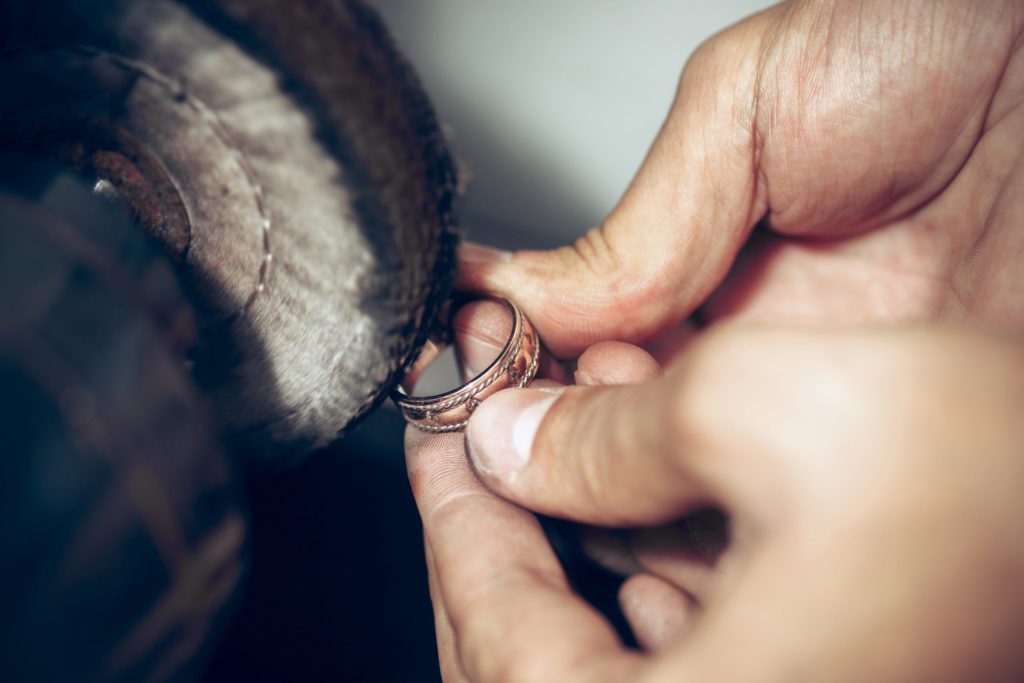
Polishing
Polishing is a series of extremely precise finishing operations. It’s a job that involves restoring the brilliance of jewellery pieces.
Before proceeding with polishing, they identify the work required, the tools to be used, the finishing techniques to be applied (sanding, brightening or colouring) and the type of cleaning (stripping, degreasing or washing). Then, using his workbench and the various tools at his disposal, he abrades the jewellery and cleans it to fine-tune the details, before monitoring quality and maintaining the machines.
Polishing operations are time-consuming, tedious and require special expertise. The master polisher has various tools at his disposal, such as barrels, brushes and boxwood, to deburr and file the objects in question.

Machining
Machining is a high-precision job, involving the assembly and production of complex and unique pieces with rigorous accuracy.
Above all, a machining technician, accompanied by his team and using the tools at his disposal, is concerned with removing material to give the raw part the desired shape and dimensions. This work can be carried out on all types of metals and alloys.
Whether it’s a series of ten or thousands of jewellery pieces, he is constantly striving for perfection, studying and choosing the techniques best suited to producing the desired parts. To this end, it intervenes throughout the manufacturing process to anticipate and resolve production-related problems.
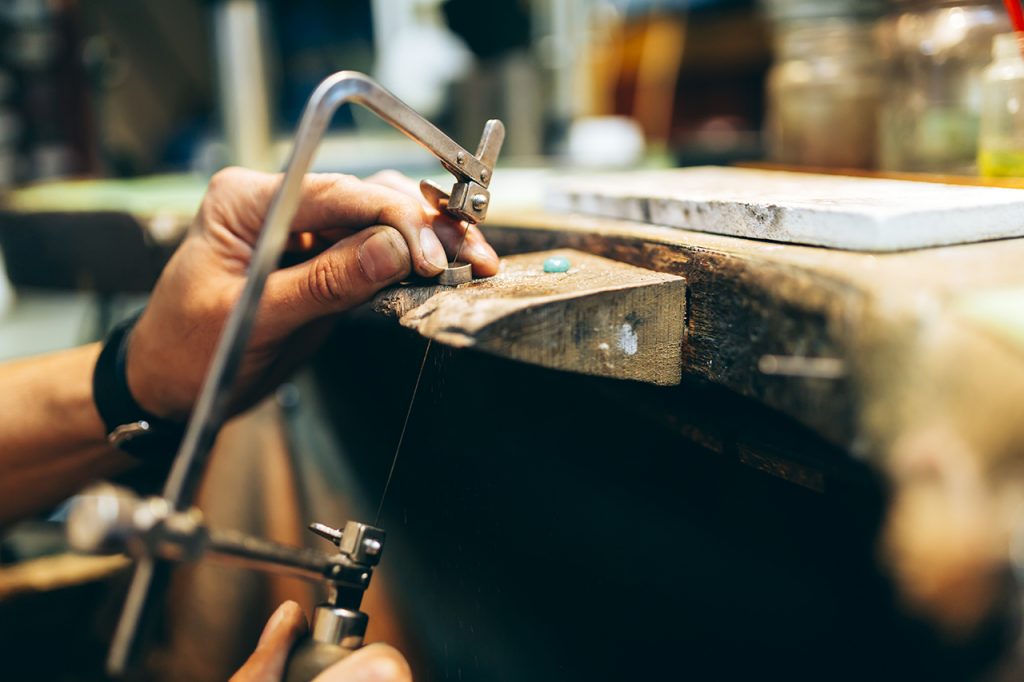
Cast iron
Art casting is an age-old skill that has become indispensable in small workshops and factories alike. It is an excellent technique for producing unique pieces.
This work involves pouring a liquid metal or alloy into a mould to reproduce part of a component.
After cooling, the metal takes on the shape of the jewel, and must be identical to the shape defined in the prototype. During this process, the foundry operator must also limit subsequent finishing work as much as possible.
To obtain finished parts, the foundry operator makes a mould using various techniques. The choice of one technique over another depends on the nature of the alloy, the dimensions, quantities and characteristics of the parts to be produced. Casting with lost wax and sand or cuttlebone are complex casting techniques that require high precision and quick reflexes.
